Braiding Past, Present and Future:
University of Alberta Indigenous Strategic Plan
This plan reflects an important step in our institution’s commitment to reconciliation in post-secondary education, research and addressing the historical legacy of the residential school system and Canada’s colonial history in a meaningful and lasting way.
The Braid
The plan is grouped into three categories or “strands”– symbolizing the responsibilities of the Sweetgrass Teachings: looking to the past, in-powering the present and imagining the future. These three groupings represent a sweetgrass braid and the accompanying prairie and parkland-based Indigenous understandings (where the University of Alberta is primarily, though importantly, not only, based). In many Indigenous cultures, the braid also represents mind, body and spirit and the balance between the three for good health and harmony in individuals and communities.
Looking to the Past
1.0 Indigenous leadership and co-ordination
2.0 Accountability and reporting
3.0 Indigenous Ways of Knowing: programs
4.0. Relationship with Indigenous lands and nations
5.0 Indigenous-centred policy, protocol and praxis
6.0 Reconciliation research and scholarship
7.0 University of Alberta community participation in reconciliation
In-Powering the Present
8.0. Indigenous students: recruitment, retention and completion
9.0 Indigenous student attainment: tackling barriers
10.0 Indigenous faculty and staff: recruitment and retention
11.0 Safe and welcoming spaces
Imagining the Future
12.0 Ethical research with Indigenous nations, peoples and lands
13.0 Indigenous-led research capacity development
14.0 Indigenous community engagement: nations, organizations and peoples
15.0 Indigenous community-engaged research
16.0 Indigenous community engagement: University of Alberta Senate
17.0 Indigenous community engagement: University of Alberta Alumni
18.0 Innovative funding
Strategic Plan Alignment
Colleges, faculties and portfolios at the University of Alberta are working to operationalize the accountabilities outlined in Braiding Past, Present and Future. This includes work across the institutional mandate – curricular change, research frameworks, student experience and policy development – among others.
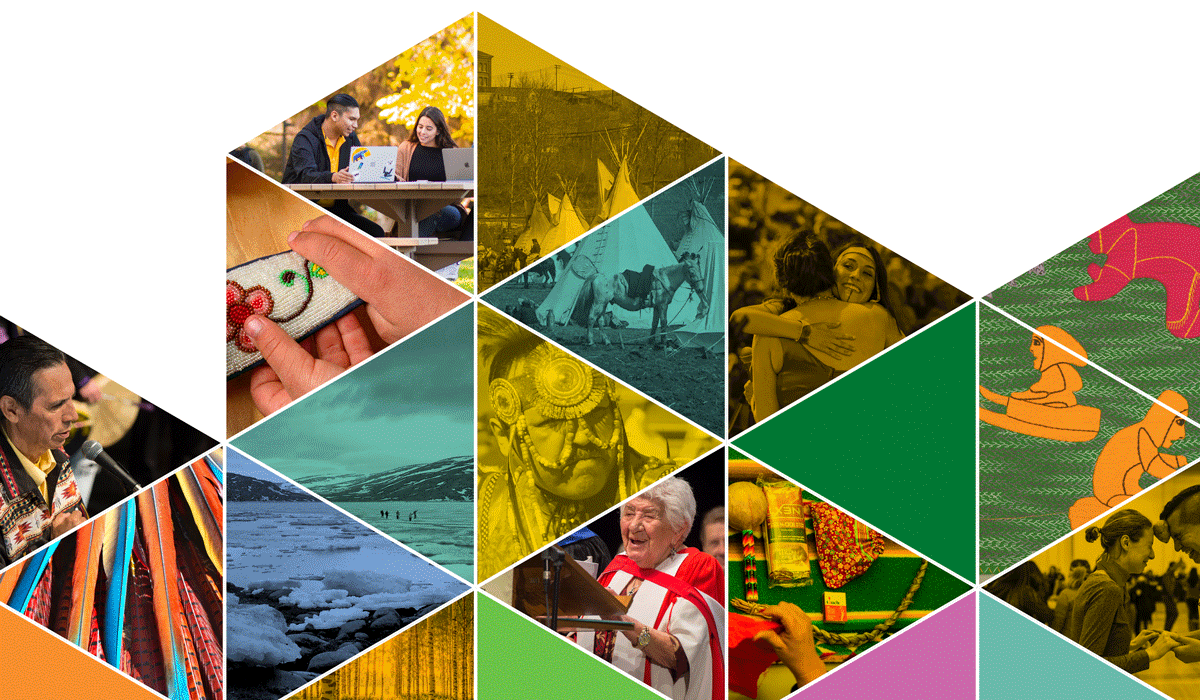
Opening Messages
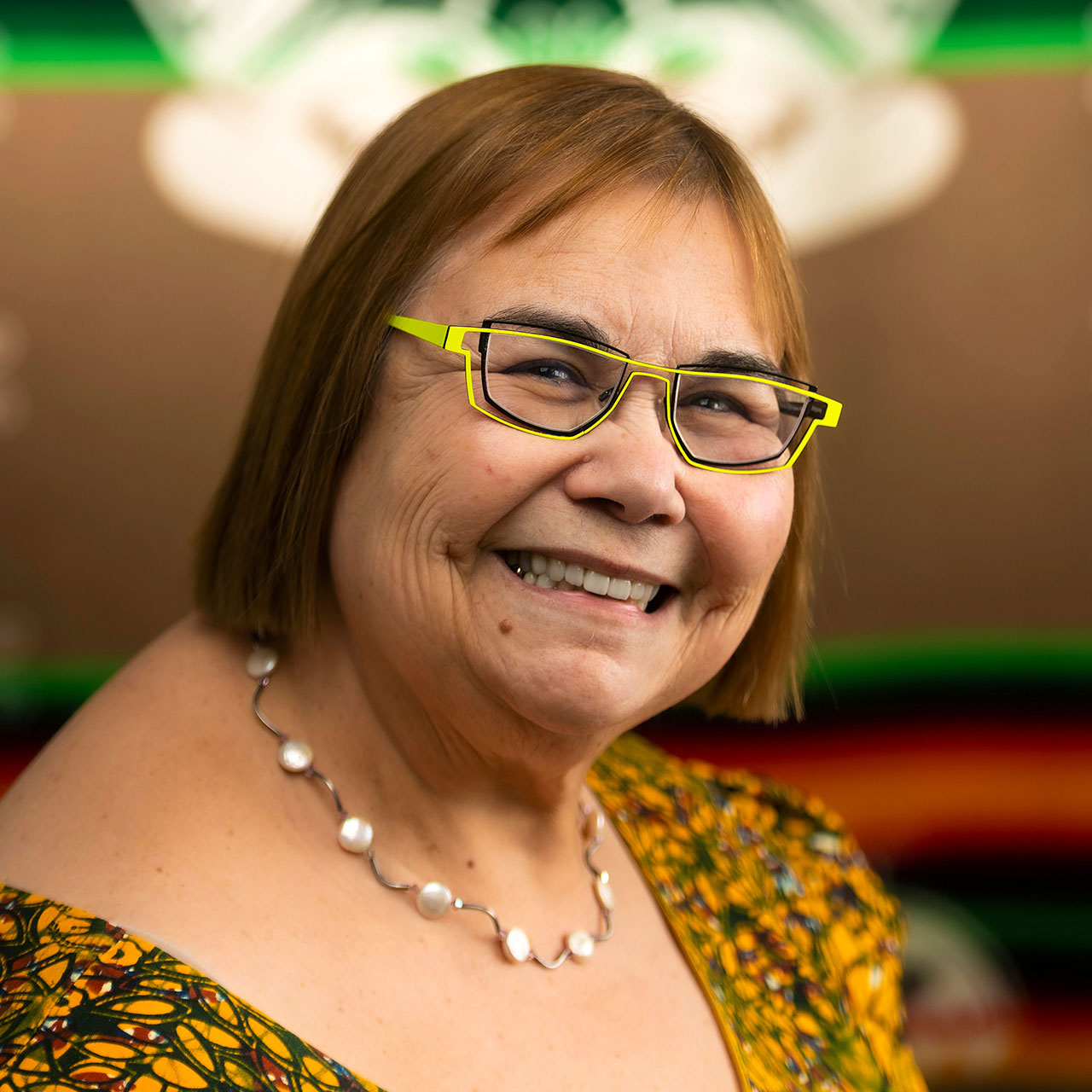
Dr. Florence Glanfield, Vice-Provost, Indigenous Programming and Research
Message from the Vice-Provost, Indigenous Programming and Research
The ISP recognizes our collective responsibility to acknowledge our history and to honour those that came before us and to follow the seven sacred teachings — love, respect, honesty, courage, wisdom, and humility; to know the first six together is to know truth.

Bill Flanagan, University of Alberta President and Vice-Chancellor
Message from the President and Vice-Chancellor
The Braiding Past, Present and Future: University of Alberta Indigenous Strategic Plan will enable transformative institutional practices that tackle the full scope of these endeavours. Reconciliation is not a destination but a journey in which we all have a part to play.
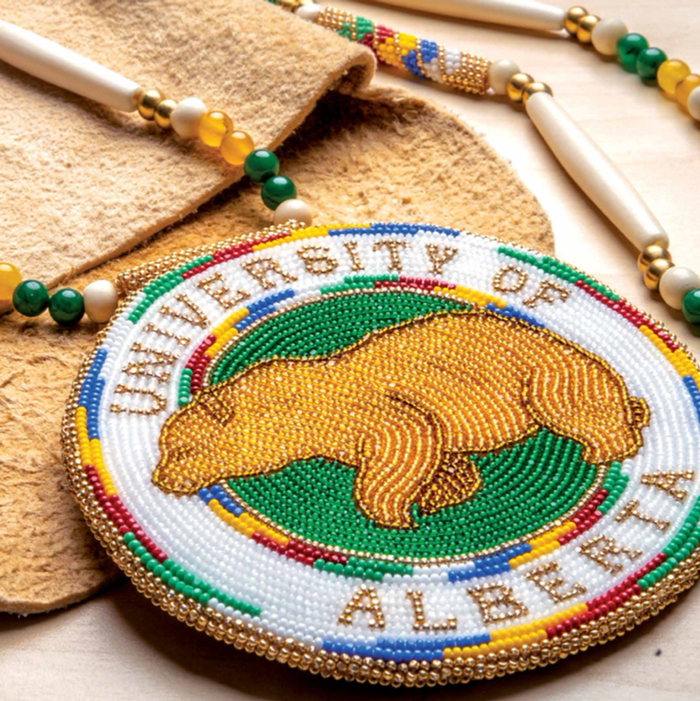
Beadwork by Tara Kappo, who is Woodland Cree and a U of A grad
Messages from the Indigenous Strategic Plan
Listen to stories highlighting the importance of truth, reconciliation and impact of Indigenous Initiatives at the University of Alberta.
Introduction
As part of the struggle to address colonialism and its subjugation, Indigenous peoples have continuously fought against the structures, laws and practices meant to disempower in order to assert Indigenous rights and seek a just relationship with the state and beyond.
At the University of Alberta, the work of Indigenous advocates and allies has led to the truly impactful Indigenous programs, initiatives and course offerings that we know and celebrate today, such as the Faculty of Native Studies, the Transition Year Program, the Aboriginal Teacher Education Program and the Specialization in Indigenous Peoples Education graduate program, to name but a few. This plan acknowledges the courage and strength of the Elders, Knowledge Keepers, Indigenous leaders and allies who “walked the path” to bring about the changes that have allowed us to reach the place we are at in the journey towards Indigenous sovereignty and wellness.
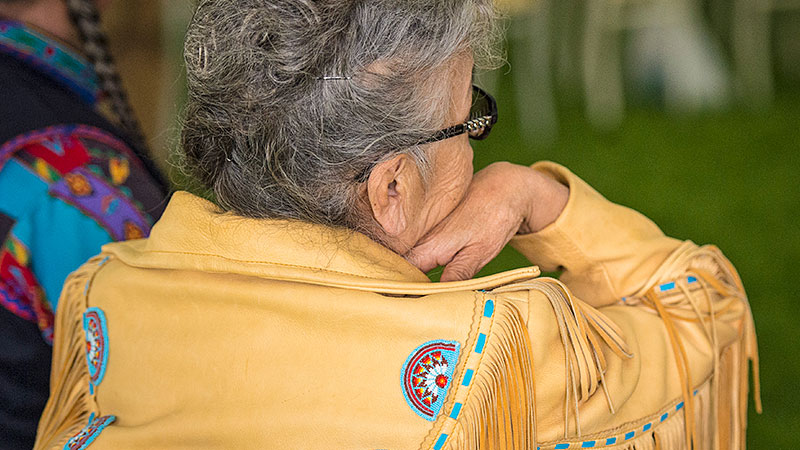
Woman wearing a beaded and fringed jacket
Truth and Reconciliation Commission of Canada
The context of this journey is critical and it is only recently that a more collective understanding of the history that continues to shape the historical and lived experiences of Indigenous peoples has emerged.
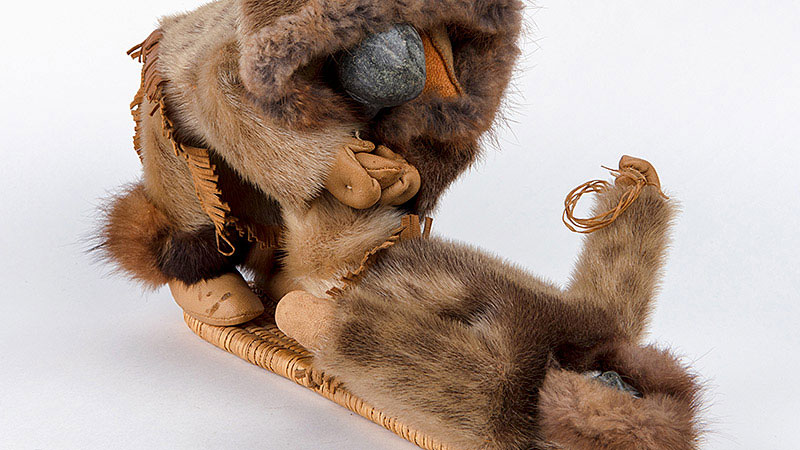
Sculpture of a parent tying a child's shoes
United Nations Declaration on the Rights of Indigenous Peoples
The United Nations Declaration on the Rights of Indigenous Peoples (UNDRIP) represents another key political milestone for Indigenous peoples worldwide.
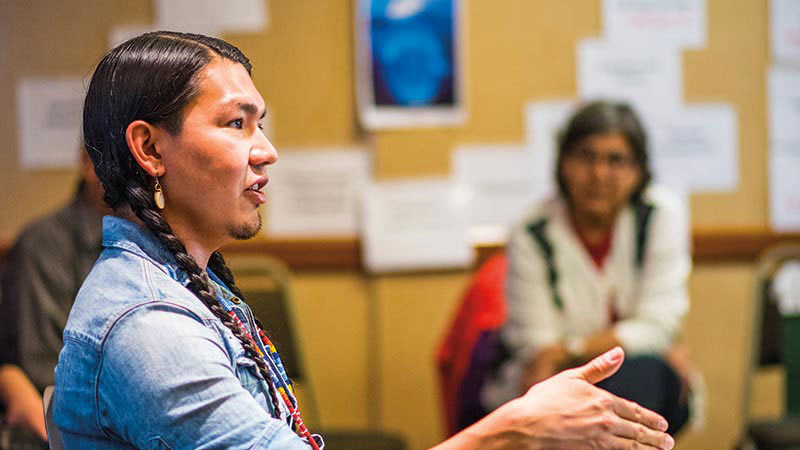
Dr. James Makokis
Groundswell
There is a significant expectation from Indigenous and non-Indigenous communities alike that the University of Alberta takes up its role in Indigenous-focused work and reconciliation.
Affirmation for Action by the University Community
The U of A acknowledges that indigenization is an institutional journey that will likely take generations to address. Only intentional, conscientious, systemic changes can move the institution closer to these critical goals. In the spirit of these understandings — and with an acknowledgment that the work to indigenize the institution touches on every academic, administrative and operational aspect of the university — we, as signatories, affirm our commitment as individuals, as educators, as researchers, as administrators and as leaders to act on Indigenous Initiatives within our units and across the institution.
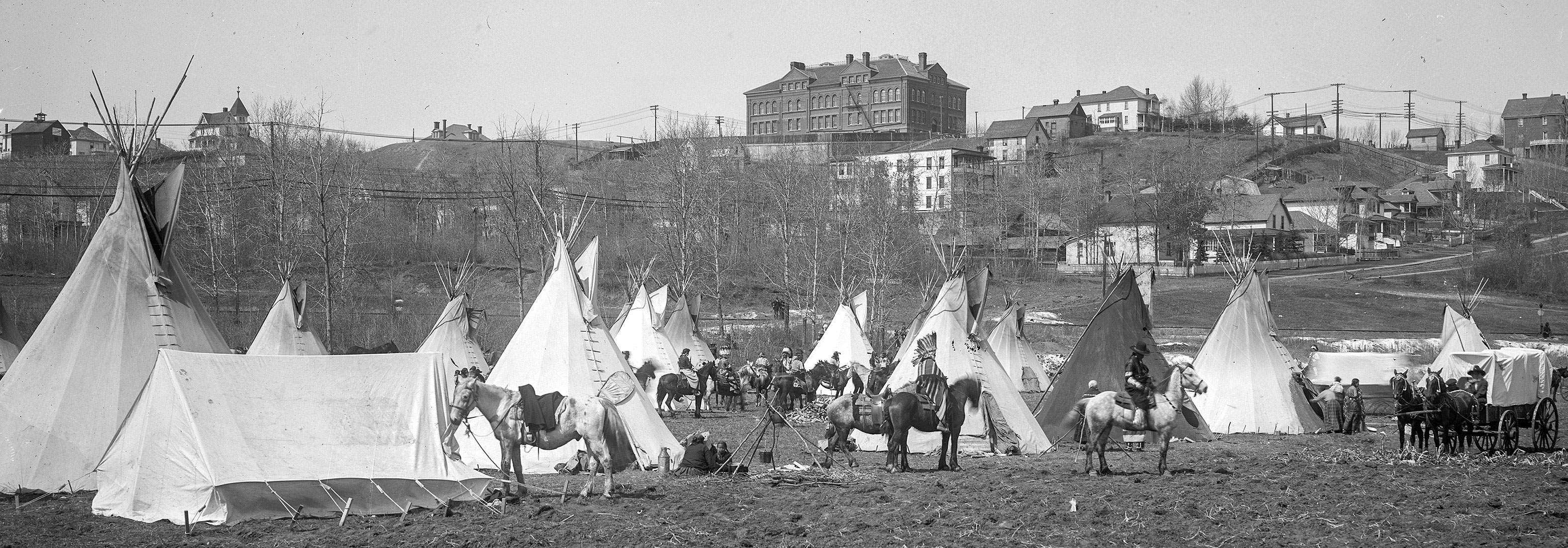
An encampment on Rossdale Flats, April 1919. Provincial Archives of Alberta, B882.
Gratitude
With gratitude, we acknowledge our ancestors for the strength of spirit that is our inheritance from the endless generations that came before. We honour our ancestral lines, carrying forward the gifts, traditions and hopes they bequeathed us.
We offer thanks to the Elders, Indigenous leaders, students, colleagues, alumni and non-Indigenous allies at the University of Alberta for the courageous and often difficult work that they did in the past to lead us to this moment. We are grateful for the opportunity to honour them by carrying this work forward.
We acknowledge the many elders and knowledge keepers that currently serve as advisors, spiritual leaders, teachers, participants and community advocates with the university. The work of the university, across spaces including research, student supports, community engagement and curriculum, is supported by the many relationships with diverse elders and knowledge keepers. They have generously shared their knowledge and time with the University of Alberta, helping the institution to ground its work in Indigenous teachings, moving towards richer conceptions of reconciliation.
We are grateful to Elder Fernie Marty for sharing his knowledge of the Sweetgrass Teachings, to Dr. Carl Urion and Elder Elmer Ghostkeeper for the teachings about the University of Alberta’s journey and to Doreen Daychief, Edna Elias, Elmer Ghostkeeper, Dorothy Thunder, Gil Anderson, Lyndon Aginas, Dr. Betty Bastien, Isadore Kootenay, Phillip Cardinal and Lynda Minoose for their sharing of Braiding Past, Present, and Future in their languages.
